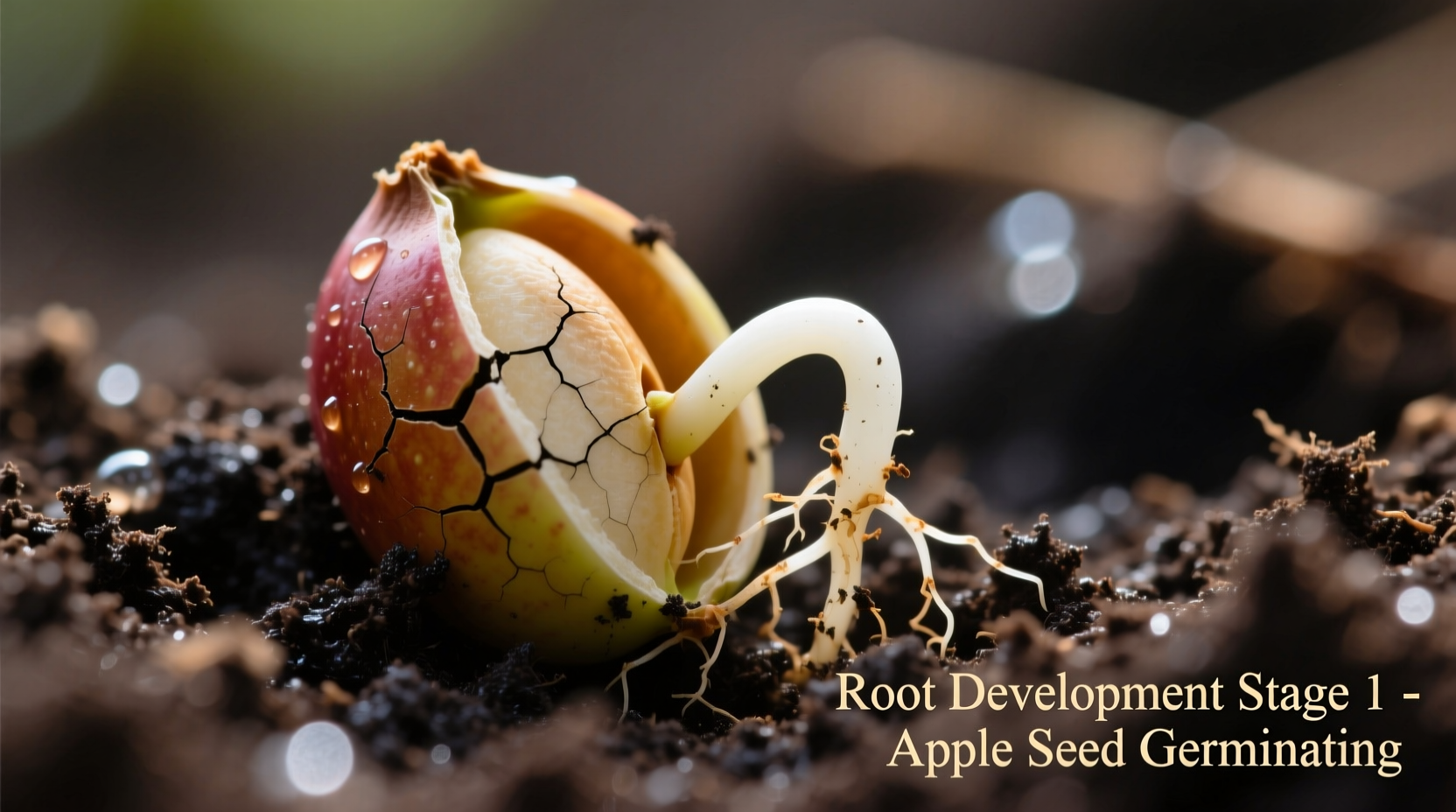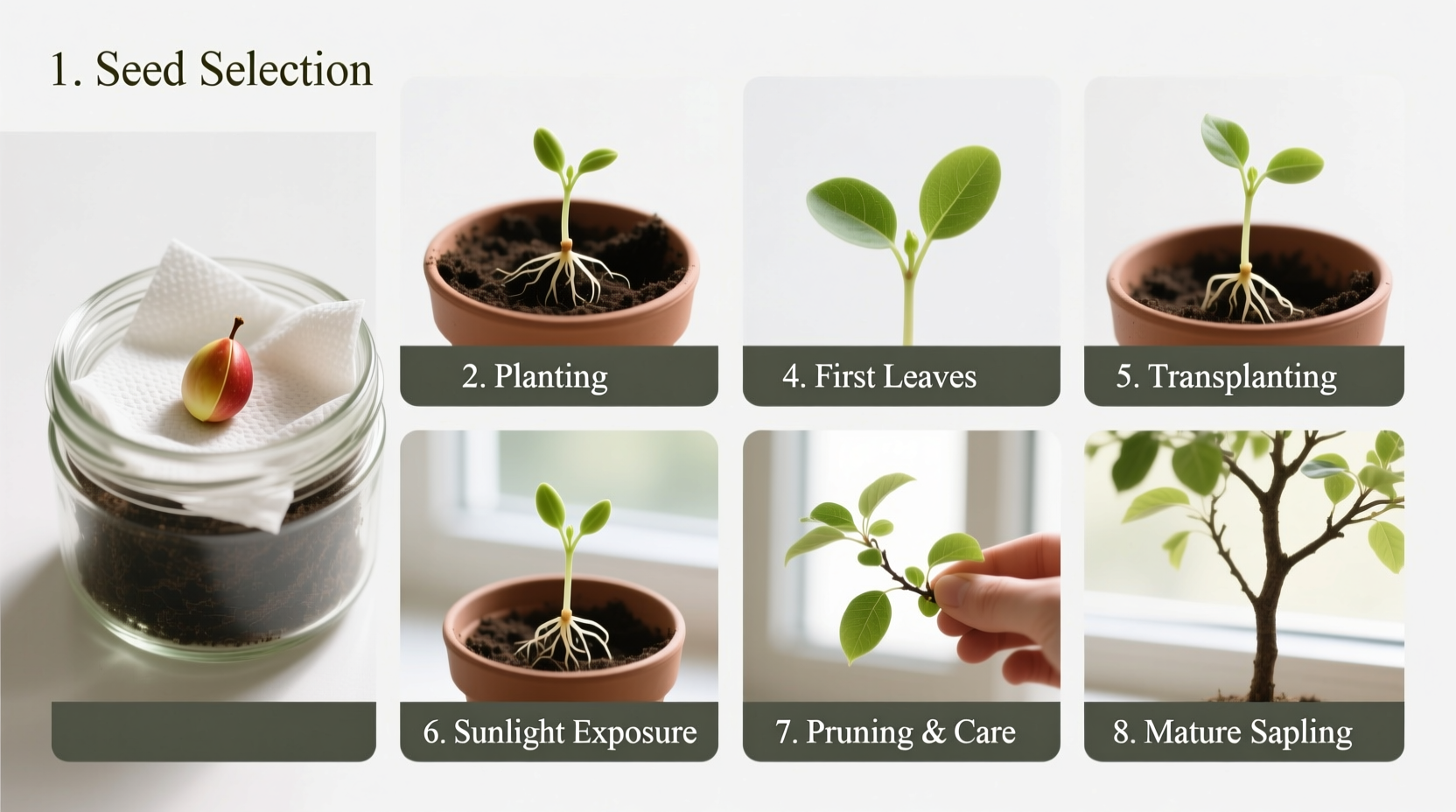Direct answer: Growing apple seeds requires 60-90 days of cold stratification at 33-40°F (1-4°C) before planting in well-draining soil. Seed-grown apple trees take 7-10 years to fruit and won't produce apples identical to the parent due to genetic variation. For reliable fruit production, grafting is recommended over seed propagation.
Have you ever wondered if you can grow an apple tree from the seeds of your favorite grocery store apple? While possible, growing apple trees from seeds isn't as straightforward as planting other garden plants. This guide provides realistic expectations and science-backed steps to successfully germinate apple seeds, whether you're experimenting for fun or starting a breeding project.
The Reality Check: Why Your Apple Seeds Won't Produce "True" Fruit
Before diving into the planting process, understand this crucial fact: apple trees grown from seeds exhibit extreme genetic variation. Unlike many plants, apple seeds don't produce "true" to the parent tree. This means the fruit from your seed-grown tree will likely differ significantly from the apple you ate. According to Cornell University's horticulture department, this genetic diversity occurs because apples are triploid and require cross-pollination between different varieties.
| Propagation Method | Time to Fruit | Fruit Quality | Genetic Consistency |
|---|---|---|---|
| Seed-Grown Tree | 7-10 years | Unpredictable (often inferior) | High variation |
| Grafted Tree | 2-5 years | Identical to parent variety | Exact clone |
Source: USDA Agricultural Research Service, Fruit Breeding and Cultivar Development Program
When Growing From Seeds Makes Sense
Despite the challenges, growing apples from seeds has legitimate purposes:
- Rootstock development - Many commercial growers use seed-grown trees as rootstock for grafting
- Breeding programs - Developing new apple varieties requires seed propagation
- Educational projects - Excellent for teaching children about plant genetics and growth cycles
- Ornamental trees - If you're growing for shade or flowers rather than fruit
The Complete Apple Seed Germination Timeline
Successful apple seed germination follows this precise sequence:
- Seed extraction (September-October): Remove seeds from ripe apples, clean thoroughly
- Cold stratification (November-January): 60-90 days at 33-40°F (1-4°C)
- Germination check (January-February): Look for emerging root tips
- Potting (February-March): Plant in well-draining mix when roots appear
- Indoor growth (Spring): Maintain in pots until danger of frost passes
- Transplanting (Late spring): Move to permanent location with full sun
Source: University of Minnesota Extension, Growing Apples in Minnesota
Step-by-Step: How to Grow Apple Seeds Successfully
1. Selecting and Preparing Seeds
Choose seeds from multiple apple varieties for better genetic diversity. Organic apples work best as conventionally grown apples may have been treated with growth inhibitors. Clean seeds thoroughly to remove all pulp, which contains germination inhibitors. Air-dry seeds for 24 hours before stratification.
2. Cold Stratification Process
This critical step mimics winter conditions needed for germination:
- Mix seeds with slightly moist peat moss or vermiculite
- Place in labeled plastic bag with ventilation holes
- Store in refrigerator (not freezer) at 33-40°F (1-4°C)
- Check weekly for mold and moisture levels
- Wait 60-90 days until root tips emerge (typically 1/4 inch)
3. Planting Your Stratified Seeds
Once roots appear:
- Plant seeds 1/2 inch deep in potting mix with good drainage
- Maintain soil temperature of 65-75°F (18-24°C)
- Keep soil consistently moist but not waterlogged
- Provide 12-16 hours of light daily (grow lights work best)
- Expect sprouts in 2-6 weeks after planting
4. Transplanting to Permanent Location
When seedlings reach 6-8 inches tall and outdoor temperatures stay above 50°F (10°C) at night:
- Choose a sunny location with well-draining soil
- Space trees 15-20 feet apart for standard varieties
- Dig hole twice as wide as root system
- Plant at same soil depth as in container
- Water thoroughly after planting
Climate Considerations for Apple Seedlings
Apple trees require specific climate conditions to thrive. According to the USDA Plant Hardiness Zone Map, most apple varieties grow best in zones 3-8. Trees grown from seeds need proper chill hours (periods below 45°F/7°C) to break dormancy and produce fruit. Different varieties require 500-1,000 chill hours annually. Planting outside your zone's requirements will prevent proper fruiting.

Troubleshooting Common Problems
No Germination After Stratification
Possible causes:
- Insufficient stratification time (most seeds need 70+ days)
- Temperature too warm during cold treatment
- Seeds from commercially treated fruit
- Natural low viability (apple seeds average 30-50% germination)
Weak or Leggy Seedlings
Solutions:
- Increase light exposure (12-16 hours daily)
- Lower indoor temperatures to 60-65°F (15-18°C)
- Gently brush seedlings daily to strengthen stems
- Avoid over-fertilizing young plants
Long-Term Expectations for Seed-Grown Apple Trees
Be prepared for a lengthy process. While dwarf grafted trees may fruit in 2-3 years, seed-grown standard trees typically take 7-10 years to produce their first apples. The University of California's fruit tree guide notes that seed-grown apples often produce smaller, more acidic fruit compared to commercial varieties. If your goal is reliable, high-quality apples, consider grafting scion wood from a known variety onto your seedling rootstock once it reaches pencil thickness.











 浙公网安备
33010002000092号
浙公网安备
33010002000092号 浙B2-20120091-4
浙B2-20120091-4